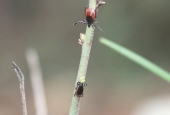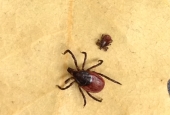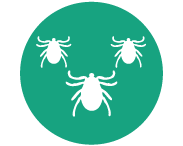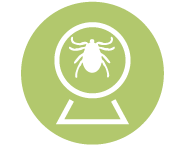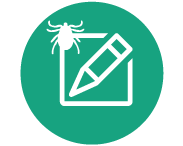Alameda County has a great diversity of tick species, but there are only three species of commonly encountered ticks that may pose a public health risk. Adult and immature ticks can be found in many of the popular wooded areas, trails, and recreational parks throughout the county, especially in those that experience moderate temperatures and high humidity.
If you are bitten by a tick, please contact us or submit an online request for service. Our District will identify the tick and, if necessary, provide information where to submit the tick for disease testing. If the tick was collected from a property in Alameda County, we can conduct an on-site inspection and evaluation.
Contrary to popular belief, ticks are not insects, but actually small, blood-sucking arachnids. They experience a complex life cycle with four different stages, growing from larval stages with six legs to nymph and adult stages with eight legs. They are divided into two groups: hard-bodied ticks and soft-bodied ticks. Both groups look quite different morphologically. The common ticks in Alameda County are all hard-bodied ticks. Hard-bodied ticks, when not engorged with blood, are typically flattened with body colors that vary from light beige, reddish to dark brown. A fully engorged female tick can become five times larger than her normal size and turn greyish color when her abdomen fills with blood.
Request Service
Complete our online request form below



